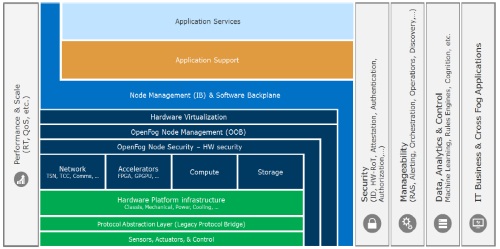- This topic has 0 replies, 1 voice, and was last updated 6 years, 9 months ago by .
Viewing 0 reply threads
Viewing 0 reply threads
- You must be logged in to reply to this topic.
› Forums › Security › News (Security) › Open Fog reference Architecture: Security Standards
Tagged: EdgeFog_G7, SecureElement_H11, Standards G11
The OpenFog Consortium has discussed security, interoperable services and common crypto mechanisms to push market acceptance of IoT services.
Delivering services across the IoT became the focal point of the OpenFog Reference Architecture, a baseline to developing an open architecture fog computing environment. The OpenFog Consortium, a group of more than 50 organisations, has discussed IoT architecture encompassing a broad spectrum.
The year-old group defines “fog” broadly to cover everything from IoT end nodes to cloud services. It aims to define ways to minimise backhaul while providing reliable communications and deterministic latencies. Ultimately its recommendations will touch everything from the design of end node SoCs to gateways and applications.
 Figure 1: The OpenFog Reference Architecture covers a broad waterfront from end-node SoCs to cloud services.
Figure 1: The OpenFog Reference Architecture covers a broad waterfront from end-node SoCs to cloud services.
The Trusted Computing Group’s standards for a hardware root of trust and how chip designers implement them may need to be modified for IoT, said Rob Swanson, chair of the consortium’s technical group and a principal engineer at Intel.
In addition, rivals such as ARM and Intel need to align the security primitives in their competing architectures “to serve app developers in a consistent way, [for example in] common crypto mechanisms for hardware acceleration,” Swanson said. Incidentally, ARM is a member of the consortium which so far includes few chip vendors.